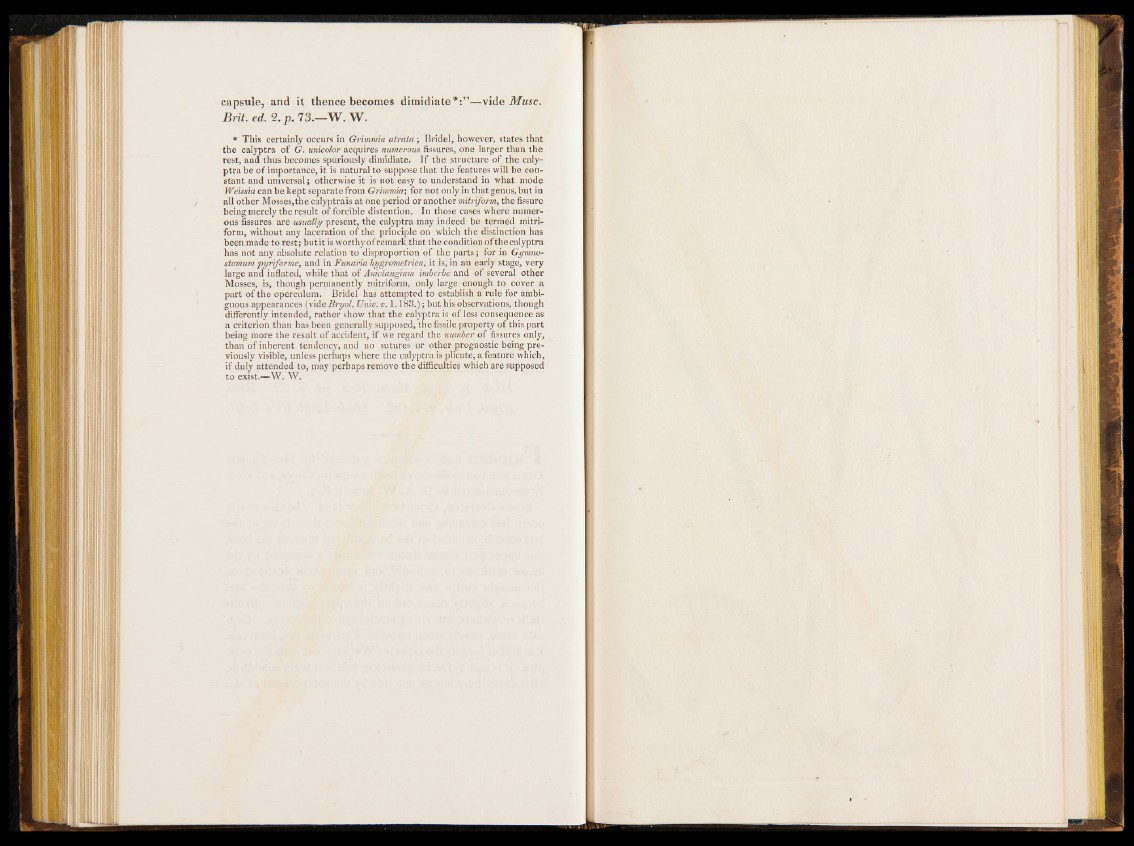
capsule, and it thence becomes dimidiate*:”—vide Muse.
Brit. ed. 2. p. 73.—W. W.
* This certainly occurs in Grimmia atrata; Bridel, however, states that
the calyptra of G. unicolor acquires numerous fissures, one larger than the
rest, and thus becomes spuriously dimidiate. If the structure of the calyptra
be of importance, it is natural to suppose that the features will be constant
and universal; otherwise it is not easy to understand in what mode
Weissia can be kept separate from Grimmia; for not only in that genus, but in
all other Mosses,the calyptrais at one period or another mitriform, thefissure
being merely the result of forcible distention. In those cases where numerous
fissures are usually present, the calyptra may indeed be termed mitriform,
without any laceration of the principle on which the distinction has
been made to rest; but it is worthy of remark that the condition of the calyptra
has not any absolute relation to disproportion of the parts; for in Gymno-
stomum pyriforme, and in Funaria hygrometrica, it is, in an early stage, very
large and inflated, while that of Anictangium imberbe and of several other
Mosses, is, though permanently mitriform, only large enough to cover a
part of the operculum. Bridel has attempted to establish a rule for ambiguous
appearances (videBryol. Univ. v. 1.183.); but his observations, though
differently intended, rather show that the calyptra is of less consequence as
a criterion than has been generally supposed, the fissile property of this part
being more the result of accident, if we regard the number of fissures only,
than of inherent tendency, and no sutures or other prognostic being previously
visible, unless perhaps where the calyptra is plicate, a feature which,
if duly attended to, may perhaps remove the difficulties which are supposed
to exist.—W. W.